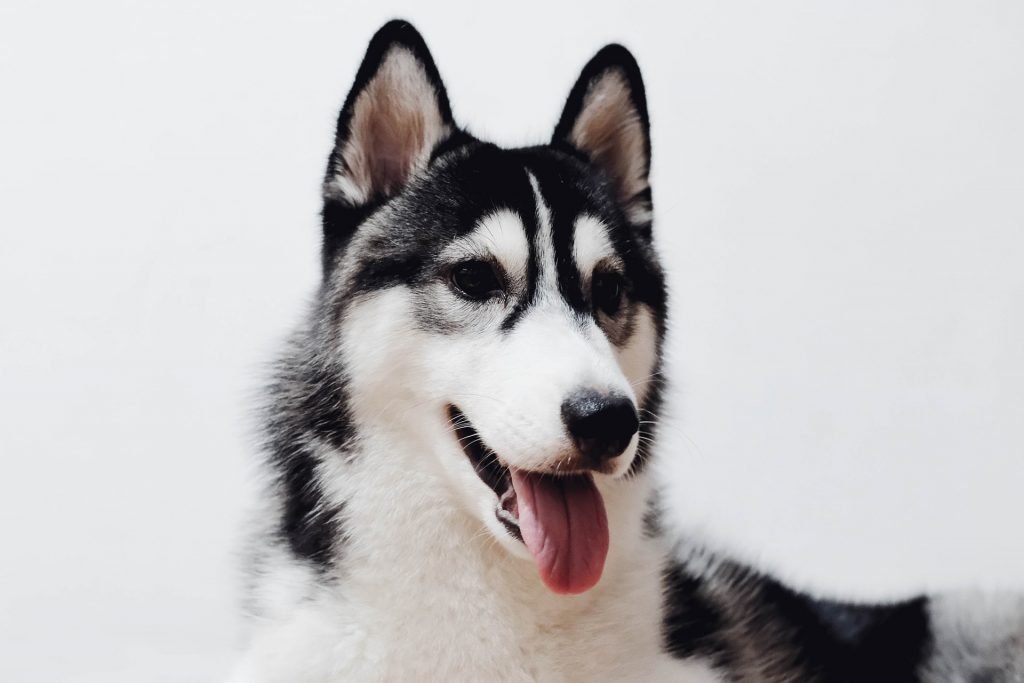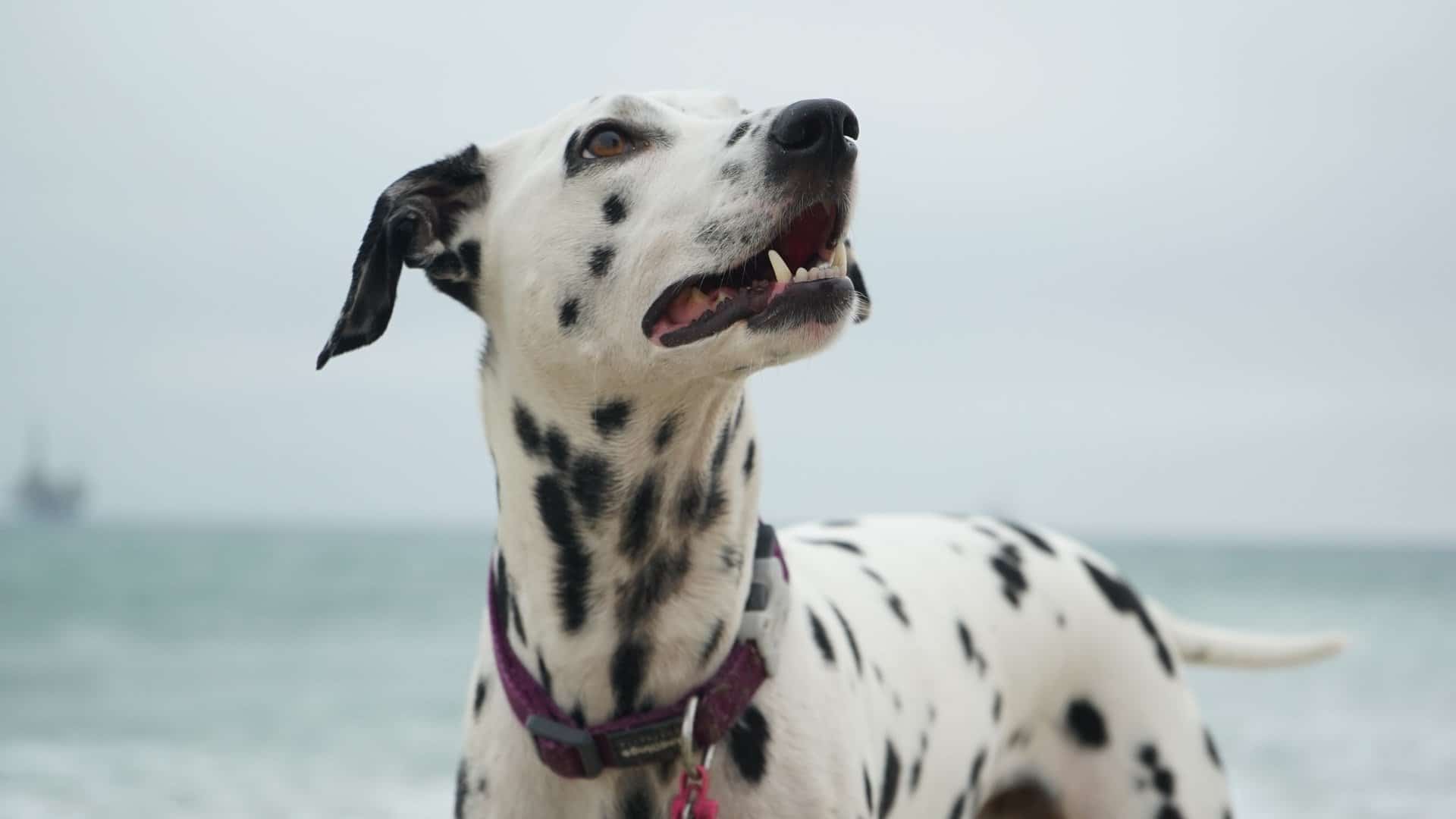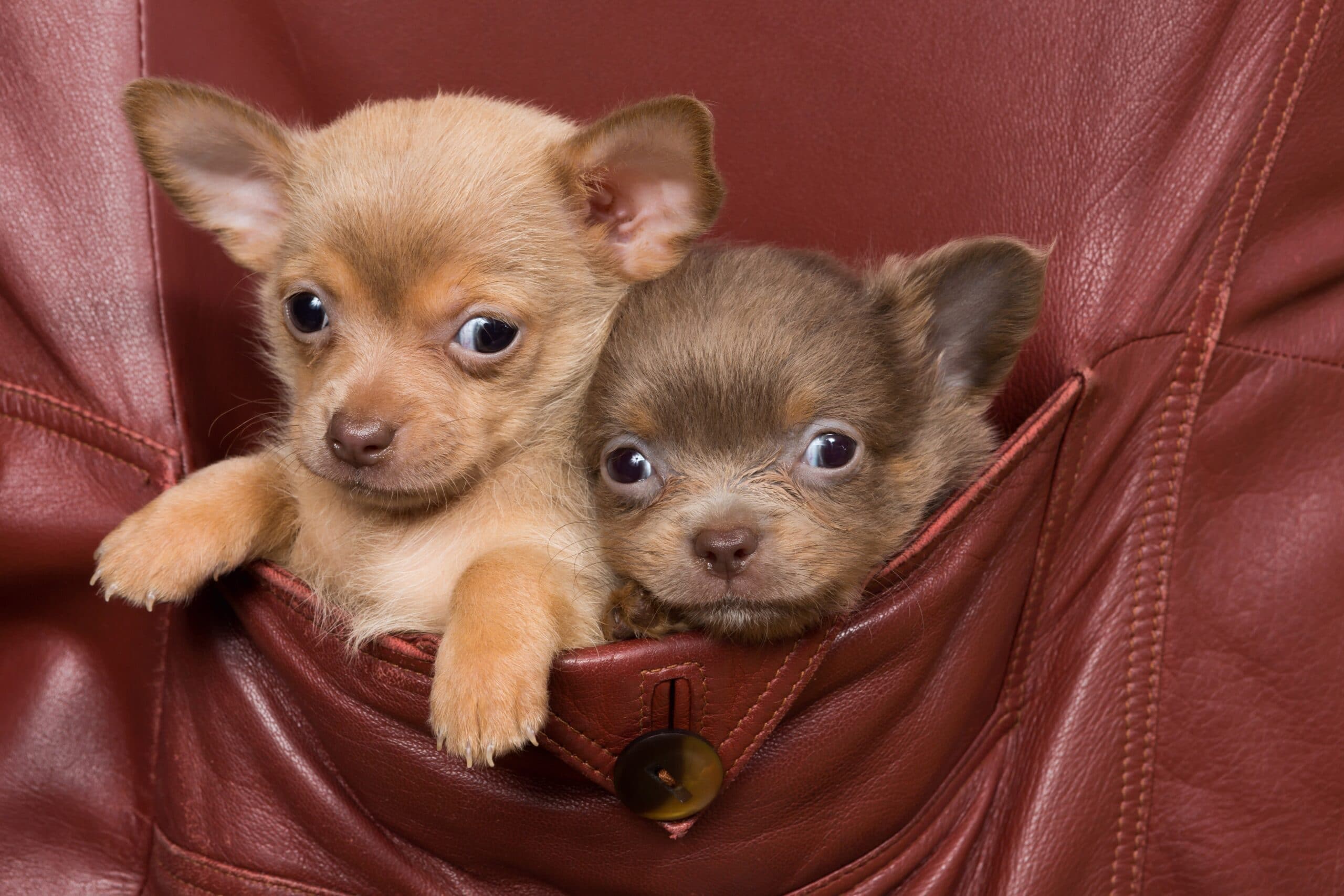Dog Body Language – 12 Amazing Clues
Dog body language interpretation is necessary to understand what your dog is trying to tell you. Many times pet dogs feel confused and frustrated because of your inability to understand the message.
Interestingly, dogs communicate emotions and intentions through their body posture, tail carriage, facial expressions, licking and sniffing and other body languages.
Sometimes the communication gap is because humans are just inexperienced in reading dog body language or we approach dogs just as we would approach another human: making eye contact and with our hand of friendship extended out.
We can also make the mistake of interpreting dog body language from a human viewpoint – assuming a lack of interest in us when a dog looks away or yawns.
Being able to correctly read a dog’s body language can tell you when the dog is scared, nervous or stressed, all of which are important cues on how a dog is about to respond.
Misinterpreting a dog’s body language can cause one to assume that the dog is friendly and approachable, when in reality the dog may be telling you to stay away. This sort of miscommunication and people not being able to read the warning signals leads to incidents of biting.
The good news is that you can improve your communication with your dog by paying attention to a few tips on correctly deciphering dog body language.
However, it is important that you connect the different signals that the dog is sharing through its body language to form a complete picture of what the dog is communicating.
Don’t make the mistake of reading them in isolation. So, when trying to read dog body language look at every signal – the tail height, direction of tail wagging to the eye shape.
1. Head

The position of a dog’s head, motion, or motionlessness can indicate different emotions.
- Head is stationary and upright – Indicates attentiveness, dominance or aggression
- Head is stationary and lowered – submissive or fearful
- The dog moves its head – the dog is feeling playful
- Tilted head – trying to listen more intently or is expecting a reward
- Turns head away – indicates fear
2. Eyes
The eyes say a lot about a dog’s emotional state and intention.
- Soft eyes – The dog is approachable, self-assured and social. Telltale signs include round and soft eyes and dilated pupils based on the lighting (small in bright lighting and large in dim). Its also accompanied by other welcoming signals such as calm tail wagging.
- Hard eyes – The dog gives you a hard and direct stare with little to no body movement. The body posture is assertive – dog leans forward, the tail is held high with stiff wagging. This is an aggressive posture and the dog is likely to bite if you ignore the warning
- Squinty eyes – Dog is trying to appease you but it may also be because the dog is afraid. If the eyes are squinted and the dog is approaching you, it may be safe to interact with it. However, if the body is leaning backward and lowered while the eyes are squinted, it may be a sign of fear and the dog may bite.
- Avoiding eye contact – Dogs perceive direct eye contact as threatening behavior and so they avoid eye contact as a sign of deference or to indicate that he doesn’t want to have a confrontation or challenge you. The dog is just being polite by avoiding eye contact and not deceitful as one would assume in the human world.
- As far as a dog is concerned, eye contact from a stranger is a threat and if the dog has a dominant temperament, the response could be aggressive.
- Even with a less dominant personality, a dog may choose to fight in the face of a potential threat. So when up against an unfamiliar dog, avoid direct eye contact and instead look at the feet, ears, or chest and approach diagonally.
- You want them to identify you as a friend and not a threat and this is possible by displaying the right body language. Check out this video on how to train your dog to make eye contact.
- Whale eye – It’s a term that refers to a dog showing you the whites of his eyes; the dog is looking sideways while the nose is pointed forward. The dog is feeling aggressive and if you don’t back off, the end result could be a bite. Consider other body languages of the dog to be sure – if the body is still and leaning forward and the dog is growling, the dog is in an aggressive mood but if the dog is relaxed, it is probably in a playful mood.
3. Mouth
- Lips curled back and teeth clamped together – a sign of aggression and a warning of a potential attack
- Open mouth with unclasped teeth – indicates that the dog is relaxed and playful
- Open mouth, panting and calm expression – indicates that the dog is relaxed
- Mouth closed and lips pulled back at the corners – a sign of tension or fear; it may also be accompanied by rapid panting
- Drooling in the absence of food – indicative of fear or anxiety
4. Ears

The position of a dog’s ears can tell us a lot about what is going on and what the dog may be intending to do. However not all dogs can communicate with their ears; dogs with sagging ears, clipped ears, or ears that are always erect cannot display emotions with their ears.
- Ears held slightly back or out to the side: The dog is relaxed
- Ears are held forward or point in the direction of something of interest – The dog is aroused and something has caught its attention
- Ears held sideways – The dog is anxious
- When the ears are held back and close to the neck – The dog is anxious but there is no intention to threaten or cause harm
- Ears are upright and facing forward – Indicates dominance or aggression
- Ears are pulled back and facing downward – A sign of fear or submission.
5. Facial Features

A dog’s facial expressions are not the same as that of humans
- Yawning – Dogs yawn in stressful situations to calm themselves and their owners.
- Lip licking – Dogs lick their lips to indicate discomfort or anxiety when faced with certain situations.
- Smiling – Its an expression that is difficult to decipher and you need to look at the body posture and tail to make sure that the dog is indeed smiling and not snarling (pulling back its lips and baring its front teeth as a sign of warning). The smile that people often refer to in relation to dogs is actually a submissive grin. Dogs smile to ease the tension in an uncomfortable situation with humans or another dog. When a dog is smiling as opposed to snarling the body language is often relaxed (eyes and ears) and the tongue flops out of its open mouth.
6. Dog sounds
Dogs use sounds to convey different emotions and messages
1. Barking – It can indicate happiness, fear, anger, anxiety, or even boredom. It needs to be viewed contextually to understand the emotion of the message.
Below are some indicators of what a bark can potentially mean:
- Barking is repetitive and intense – the dog is afraid or panicking
- Monotonous barking – the dog is bored
- Fast and high-pitched bark – the dog is happy
- Non-stop barking – the dog is anxious
2. Whining – It can mean a number of things including:
- I want to play, eat, go outdoors
- I am stressed, fearful or in pain
3. Growling – A warning of impending serious aggression if you continue to do whatever the dog deems as threatening but it doesn’t mean that a dog is angry or aggressive. Dogs also growl when playing or enjoying a treat.
4. Howling – It can mean a number of things including:
- I need attention
- I want to socialize
- I am singing along with the musical instrument playing in the background or the high-pitched emergency siren blaring outside
- I am sad or in pain
5. Sighing
- I am content and relaxed
- I give up (the dog is resigned to the outcome; gives up for instance after trying in vain to get a treat)
6. Groaning
- I am tired and ready for some rest
- I am not getting my way (you are taking my toys away, you are not letting me eat from your plate)
- The rubbing or petting feels good; don’t stop or I am not feeling well (seen more in aging dogs)
7. Body posture
A dog’s body posture is also a good indicator of how it feels and what it intends to do.
- Cowering and hunched dog – Indicates fear or stress. The dog is trying to make itself smaller to get away from something intimidating
- Stomach flip (dog rolls on to its back and exposes its belly) – It may seem as if it is asking for a belly rub, which may be the case in a calm and composed dog but in a dog that is stressed its an extreme version of cowering and the dog may even go to the extent of urinating as a sign of appeasement
- Dog leaning forward – A dog leaning forward may be trying to reach something that is of interest to it It can also indicate aggressive intentions, especially if accompanied by a tail held high and wagging stiffly; the dog may be trying to make itself larger than it is
- Play bow – This posture with the chest close to the ground and the bottom raised in the air and a wagging tail indicates a desire to engage in play with other dogs or humans. This may also include bouncing movements and face pawing.
- Paw raise – A raised paw indicates that the dog is unsure about what is happening and maybe a bit nervous as well.
8.Tail wagging
People assume that a wagging tail in a dog is a sign of happiness or friendliness and though it may be indicative of positive emotions, tail wagging can also be the result of fear, insecurity, or aggression.
However by looking at the speed, the direction of the movement and the position of the tail can, you can get a more accurate idea of the emotional state or the dog’s intent.
1. Speed
- The faster the tail wags, the more aroused the dog is
- Long, slow, side-to-side tail sweeps, which makes almost the whole of the dog’s body to move indicates a relaxed dog
- A faster jerking tail movement may indicate a negative state of mind.
2. Direction
- Tail wagging to the right – The dog is in a positive frame of mind; usually displayed when the dog comes across someone he likes
- Tail wagging to the left – The dog is up against something that makes it feel negative; the dog has encountered someone unfamiliar.
- Tail wagging like a helicopter propeller or in a circle along with a wiggling bottom – The dog is happy
3. Position
- Tail held high – The dog feels dominant, confident, assertive or even aggressive
- Tail pointing to the ground or tucked between legs – The dog is afraid or stressed
- Tail in a neutral position (extending out from the spine, or below spine level) and wagging freely or vigorously, neither high nor low – The dog is relaxed and happy
- Tail held high but wagging stiffly – The dog is assessing the situation (agitated, unsure or even scared); it is not submissive and may bite
- The tail is extended and curved – The dog is tense and likely to engage in defensive or offensive action.
Canine body language to watch with tail wagging:
- Be careful if the tail is wagging but the dog has adopted a stiff body posture and is staring with ears erect
- You need to exercise caution when the dog has a scowling and tense expression though the tail may be wagging
- Similarly, a dog’s tail wagging while barking with hard staring eyes is not in a friendly mood
9. Raised hair

When a dog is upset or aroused the hair along its shoulders, down the spine, and above the tail tends to rise up, a phenomenon known as piloerection or “raised hackles”.
It may not be indicative of aggression; the dog may be anxious, frustrated, excited, or interested in something. It’s an involuntary reaction similar to goosebumps in humans. When the dog is calm and relaxed it normally has a smooth coat of hair along its back.
10. Panting
Dogs pant to cool down but it can also indicate stress, especially when the panting is rapid and the dog’s mouth is tight with stress wrinkles around it.
11. Sweating
Dogs can sweat through their paws and a dog that is upset leaves wet footprints on the floor. A dog freezes or stands still when afraid or guarding its food or a toy; this behavior can also show up when the dog is cornered. In such situations, there is a chance that the dog may bite.
12. Displacement behaviors
Dogs sometimes display behavior that is out of context and this is known as displacement behaviors. The dog actually wants to do something but due to anxiety, uneasiness or uncertainty displays another behavior such as shaking its body as if to dispel water even when it is not wet.
Some examples of displacement behavior include:
- Scratching
- Self-grooming
- Yawning
- Licking lips even when there is no food in sight
- Sniffing the ground for no reason
Here is a video on how to interpret dog body language:
Also, check out this article from Purina on understanding dog body language.
Are you able to successfully communicate with your dog and if yes, how much does knowing dog body language help? Let us know in the comments below.






